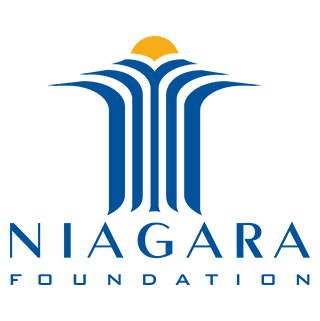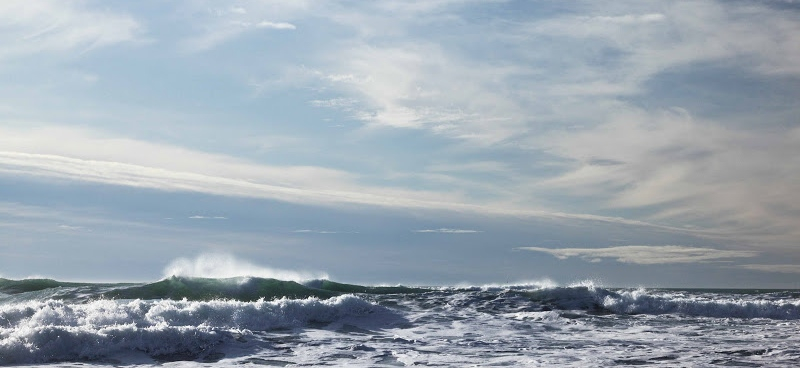By Cassidy Herrington
Brendan Dowd discovered the idea of interfaith collaboration in a dark, sweaty place.
He and an assorted group of travelers and Alaskan Native Americans were sitting cross-legged inside a dark, domed hut. Hot stones piled at the center heated the interior to a toasty 100 degrees. Each person in the pitch-black darkness was perceptible — because they were praying out loud.
“This was my first glimpse of a space that brings together people from different faiths,” Brendan said.
His closest friends and “adoptive family” were seated around him in the darkened hut. But this was unfamiliar territory. This was an intimate encounter with culture and faith, Brendan said. Sacred ground that he knew to tread on carefully, softly.
As perspiration trickled from his temples, he wondered, “How can I take this microcosmic experience to the rest of the world?”
Brendan says the communal prayer inside that traditional Lakota sweat lodge was one of several “theophanies” that have redirected his life and brought him here to Niagara Foundation. He was recently hired as director of the Center for Cultural Exchange & Interfaith Collaboration, where he is spearheading a new initiative, Abraham’s Tent Dinners.
“I’m essentially giving people the tools to be comfortable sharing their homes with people from different faiths,” Brendan said.
He crafted a thorough document, practically an instruction manual, which he sends to interested participants belonging to one of the three Abrahamic traditions: Judaism, Islam and Christianity. The pamphlet outlines etiquette and suggested topics to ensure a successful interfaith meal.
“It’s not normal dinner conversation,” Brendan said.
Some of the topics deal with weighty questions about the afterlife and the divine, which could make people feel vulnerable, he said.
“You’re dealing with scary questions and admitting that ‘I don’t own the ultimate truth,’” he said. “Or at least ‘I don’t know it yet.’”
The dinners may be unnerving at times, but they’re designed to be safe.
“Being around a table, something comfortable, like food, makes it okay to bring up a question,” Brendan said. “There’s a soft landing.”
Anders Benson hosted a dinner on Sunday.
“I was moved how everyone had a high degree of integrity, was willing to be open and honest and to see religious and cultural commonalities and idiosyncrasies that can lead to misconceptions,” Anders said in an e-mail.
Now that Brendan has designed a structure, he hopes these dinner groups eventually start organizing on their own.
“People can go deeper into their own faith when they hear from the perspectives of other faiths,” Brendan said.
And if that sounds daunting, you should know Brendan says he’s still learning to be Catholic himself.
“I didn’t define myself as a spiritual person or have any recognition of God until college,” Brendan said.
When he started undergrad at Loyola University to study graphic design, he connected with the university’s Jesuit mission.
“I found a place where it was acceptable to ask questions, hear other people’s stories and find out what it meant to me to be Catholic,” he said.
After graduation in 2007, Brendan moved to Anchorage, Alaska to volunteer with Jesuit Volunteer Corps Northwest. He planned to stay there for a year.
“I needed to explore this spiritual relationship before fulfilling the career-driven dreams I had in my head,” he said.
That year turned into four and a half. During that time, he did community organizing, dabbled in interfaith advocacy work and finally took a job as art director for an advertising firm in Anchorage.
But “the question kept hanging on,” he said.
After three years working at the ad agency, Brendan took a “self-imposed” retreat to Yakutat, a remote town at the base of the Wrangle Mountains. The town, population 646, welcomed the new visitor, who slept in the back of a cabin-like Catholic church.

Brendan captured this photo of Yakutat Bay, which feeds into the Pacific Ocean, during his “retreat.”
During his waking hours, Brendan reflected in front of the icy Pacific Ocean.
“I needed to spend some time alone, and I took my questions to the water,” Brendan said.
Another “theophany,” you could say.
Nearly two years later, Brendan is telling this story to the advisory board of the Bernadin Center at the Catholic Theological Union here in Chicago. Brendan received a full ride Bernadin Scholarship to study interreligious dialogue.
Niagara President Sherif Soydan was one of the board members listening intently to Brendan.
“I appreciated how he changed his life direction,” Sherif said. “I saw light in his eyes.”
At that moment, Sherif knew Brendan had to work for Niagara.
Sherif offered Brendan an internship for the Center for Intercultural and Religious Dialogue, but “I never considered him an intern,” he said.
In February 2013, Brendan started his internship with Niagara. His first assignment was to take Niagara’s dreamed-up Abraham’s Tent concept and turn it into a tangible and functioning program.
“When I arrived, I was told, ‘here do something with this,’” Brendan said.
His designer’s eye crafted a comprehensive strategy and timeline for the Abraham’s Tent Dinner, complete with a sophisticated logo.
Two successful dinners later, Brendan was promoted to Director of the Center.

Brendan Dowd, Niagara’s dapper Director of the Center for Cultural Exchange & Interfaith Collaboration.
For Scott Alexander, the chairman of Catholic-Muslim studies at CTU, the news of Brendan’s new position is bittersweet. Scott dreads seeing less of his “first-rate” student after graduation, he said.
“The great consolation will be the marvelous contributions he is certain to make, God willing, to the work of Niagara, as one of the great dialogue institutions in Chicagoland, the Midwest, and, I dare say, the entire country,” Scott said.
Brendan points out that water has been present during the most momentous moments of his life — sweat, oceans, lakes and snow.
“And perhaps maybe Niagara (named after the falls) is part of that coincidence,” Brendan said.
Cassidy Herrington is Niagara’s director of communications. E-mail comments, questions and story ideas to her at cassidy@niagarafoundation.org.

